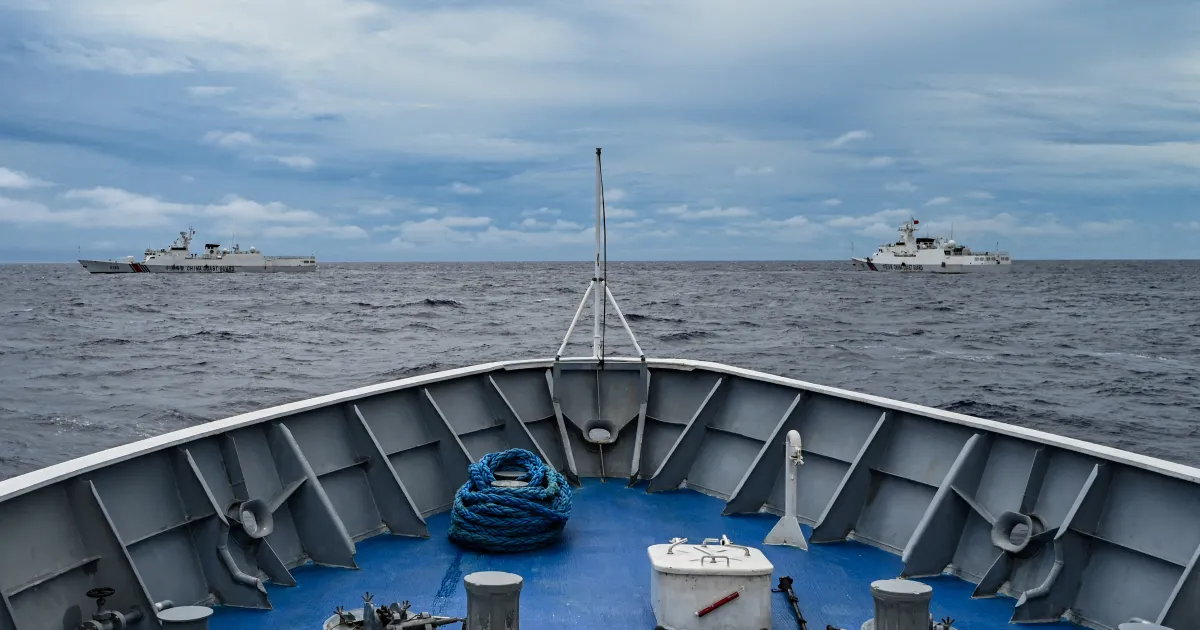Philippines Claims Chinese Ship Rams Local Vessel Near Disputed Thitu Island Amid Rising Tensions
Philippines Claims Chinese Ship Rams Local Vessel Near Disputed Thitu Island Amid Rising Tensions
By
Leah Rosenfeld
Last updated:
October 13, 2025
First Published:
November 30, 2025

Manila — The Philippines has accused Chinese maritime forces of ramming a Filipino vessel and using water cannons in a tense encounter near Thitu Island, also known locally as Pag-asa Island. The incident, which occurred early Sunday, marks a sharp escalation in the ongoing territorial disputes in the South China Sea.
According to the Philippines Coast Guard (PCG), three Filipino vessels, including the BRP Datu Pagbuaya, were anchored near Thitu Island as part of a government program designed to protect local fishermen. Around 8 a.m., Chinese ships reportedly approached the Filipino vessels, employing water cannons to intimidate the crew.
Approximately an hour later, a Chinese coast guard ship allegedly fired its water cannon directly at the BRP Datu Pagbuaya before ramming its stern. The collision caused minor structural damage but no reported injuries, the PCG confirmed.
Philippine Authorities Respond
The PCG and the Bureau of Fisheries and Aquatic Resources affirmed that their operations in the area will continue. Officials stressed that maintaining a presence near Thitu Island is crucial for safeguarding the livelihood of local Filipino fishermen who rely on the surrounding waters for their income.
Manila has called the incident a “clear threat” to regional stability, emphasizing that confrontations like this increase the risk of miscalculations that could spark a wider conflict. China’s embassy in Manila has not yet issued a public comment regarding the alleged ramming and water cannon attack.
Regional Tensions and Geopolitical Context
Tensions between China and the Philippines over the South China Sea have intensified throughout 2025, particularly around Scarborough Shoal, a key fishing area. China claims nearly the entire South China Sea, a strategic maritime corridor handling more than $3 trillion in annual international trade. The waters are also claimed in part by Brunei, Indonesia, Malaysia, the Philippines, and Vietnam, creating overlapping territorial disputes.
Analysts say such confrontations underscore the fragility of the current maritime status quo and highlight the ongoing risk of escalation. Regional observers have noted that incidents involving naval or coast guard vessels have become more frequent, raising concerns over the potential for broader conflict in one of the world’s most economically significant waterways.
Popular articles
Subscribe to unlock premium content
Gourmet Gold: Micro-Venture Funds and Europe’s Artisan Food Revolution

Artificial Elegance in Fashion

Ferrari’s Craft of Desire

Gourmet Gold: Micro-Venture Funds and Europe’s Artisan Food Revolution

Artificial Elegance in Fashion

Gourmet Gold: Micro-Venture Funds and Europe’s Artisan Food Revolution









